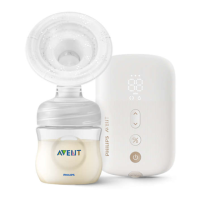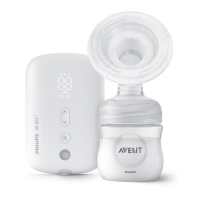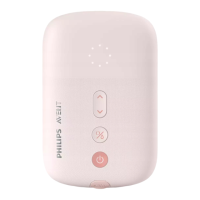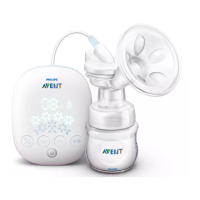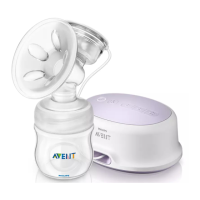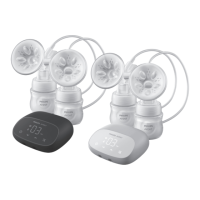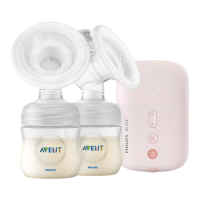Supplemental information
Below some common breastfeeding-related conditions are described. If you experience any of these symptoms, contact a
healthcare professional or breastfeeding specialist.
Common
breastfeeding-related
condition
Description
Pain sensation Pain felt on the breast or nipple, or felt as a response to the suction being above a comfortable level.
Sore nipples Persistent pain in the nipples at the beginning of the pumping session, or that lasts throughout the
entire pumping session, or pain between sessions.
Engorgement Swelling of the breast. The breast may feel hard, lumpy and tender. May include erythema (redness) of
the breast area and fever. Usually occurs during the rst days of lactation.
Bruise A reddish-purple discoloration that does not fade when pressed. When a bruise fades,
it may become green and brown.
Thrombus Thrombus can result into tenderness, pain, redness, swelling and/or heat.
Injured tissue on nipple
(nipple trauma)
- Fissures or cracked nipples.
- Skin tissue peeling o the nipple. Normally occurs in combination with cracked nipples and/or blisters.
- Nipple tear.
- Blister. Looks like small bubbles on the surface of the skin.
- Bleeding. Cracked or torn nipples can lead to bleeding of the aected area.
Clogged mammary ducts A red, tender lump on the breast. May include erythema (redness) of the breast area.
Can lead to mastitis (breast inammation) and fever if left untreated.
Storage conditions
Keep the breast pump out of direct sunlight as prolonged exposure may cause discoloration. Store the breast pump and its
accessories in a safe, clean and dry place.
If the device has been stored in a hot or cold environment, place it in an environment with a temperature of 20 °C (68 °F) for
30 minutes to let it reach a temperature within the usage conditions (5 °C to 40 °C/41 °F to 104 °F) before you use it.
Electromagnetic elds (EMF)
This Philips device complies with all applicable standards and regulations regarding exposure to electromagnetic elds.
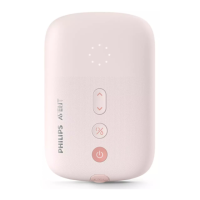
